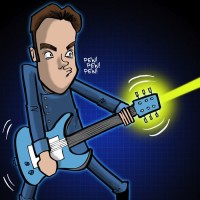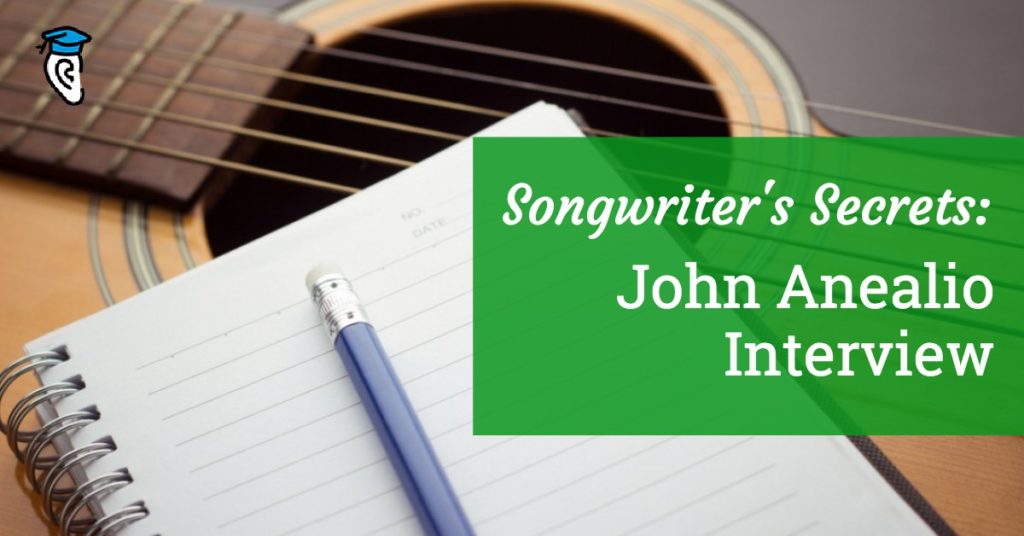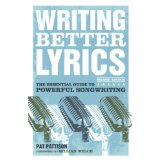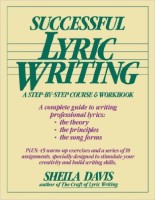John Anealio is a talented singer-songwriter who writes nerd-culture inspired songs about topics like Game of Thrones, Lego and superheroes. You may remember his EP of Halloween Songs from our recent active listening article.
John kindly agreed to join us for an interview to share his song-writing experience. If you are interested in starting to write songs yourself, don’t forget to check out the rest of our Songwriter’s Secrets series.
Q: How did you get started writing songs? Has it always been a part of your musical life?
I started playing guitar when I was about 16 years old. Right away I started putting little chord progressions together. Eventually, that led to writing riffs and melodies for bands that I was in. Finally, years later, I put a lot of time into learning how to write proper songs.
Good question. I think it was a lot of listening to great artists, learning and analyzing great songs. For me that included The Beatles, Crowded House, Squeeze, Ben Folds, Fountains of Wayne, etc. Developing your ear and your sense of form.

Kind of. For vocal songs, I tend to wait until a central idea presents itself. Then I work a chorus melody out of those lyrics. I’ll then fashion the music to a verse. Finally, I spend a long time writing the lyrics. Using sense writing, rhyming dictionaries and any other resource that I can to create a good song.
Sense Writing: Sense Writing teaches you how to work with your nervous system to unlock your creative voice. Find out more at sensewriting.org.
The main melody almost always appears in my head first. I’ll often tweak it, but the initial spark tends to happen. Making it a reality takes a lot of hard work and experimentation, but that’s where the fun is.
Well, I haven’t been doing that much lately, but those types of subjects seemed to work well in the context of a power pop songwriter.
Writing Better Lyrics by Pat Pattison and Successful Lyric Writing by Sheila Davis are essential books. They both helped me tremendously.
It can only help. Earlier, I spoke about hearing things in my head. But it’s my knowledge of music theory that allows me to make those things I hear in my head a reality.
Absolutely. Instrumental music is more open ended and therefore, more challenging in a way. I tend to work with structures, like composing in sonata allegro or rondo form. However, if I’m scoring something to picture, that’s a totally different process. Both are fun though!
Sonata Allegro: A musical structure with three parts: exposition, development, and recapitulation, in which the musical subject matter is stated, explored or expanded, and restated.
Rondo: An instrumental form characterized by the initial statement and subsequent restatement of a particular melody or section, the various statements of which are separated by contrasting material.
I’m not sure. I’d say instrumental composition helps you to focus on more complex harmonic and rhythmic structures, we’ll see if any of that finds its way into my vocal songs!
Early on, a more experienced songwriter told me that you need to write 100 songs before you start writing any good ones. Looking back on my output, I’d say that’s pretty accurate.
Just write and finish songs. Don’t worry about presenting them to the world though. Maybe join a local songwriters group where you’re given writers challenges. Play open mics. You’ll start to learn what works and what doesn’t. You’ll find your voice that way. That’s how I did it. It took a long time though.
John’s current projects include being the music director and primary composer for a company that is producing audiobooks and audio dramas, and co-hosting The Functional Nerds podcast. And be sure to check out John’s music on his website and YouTube page!





 Click to tweet
Click to tweet




